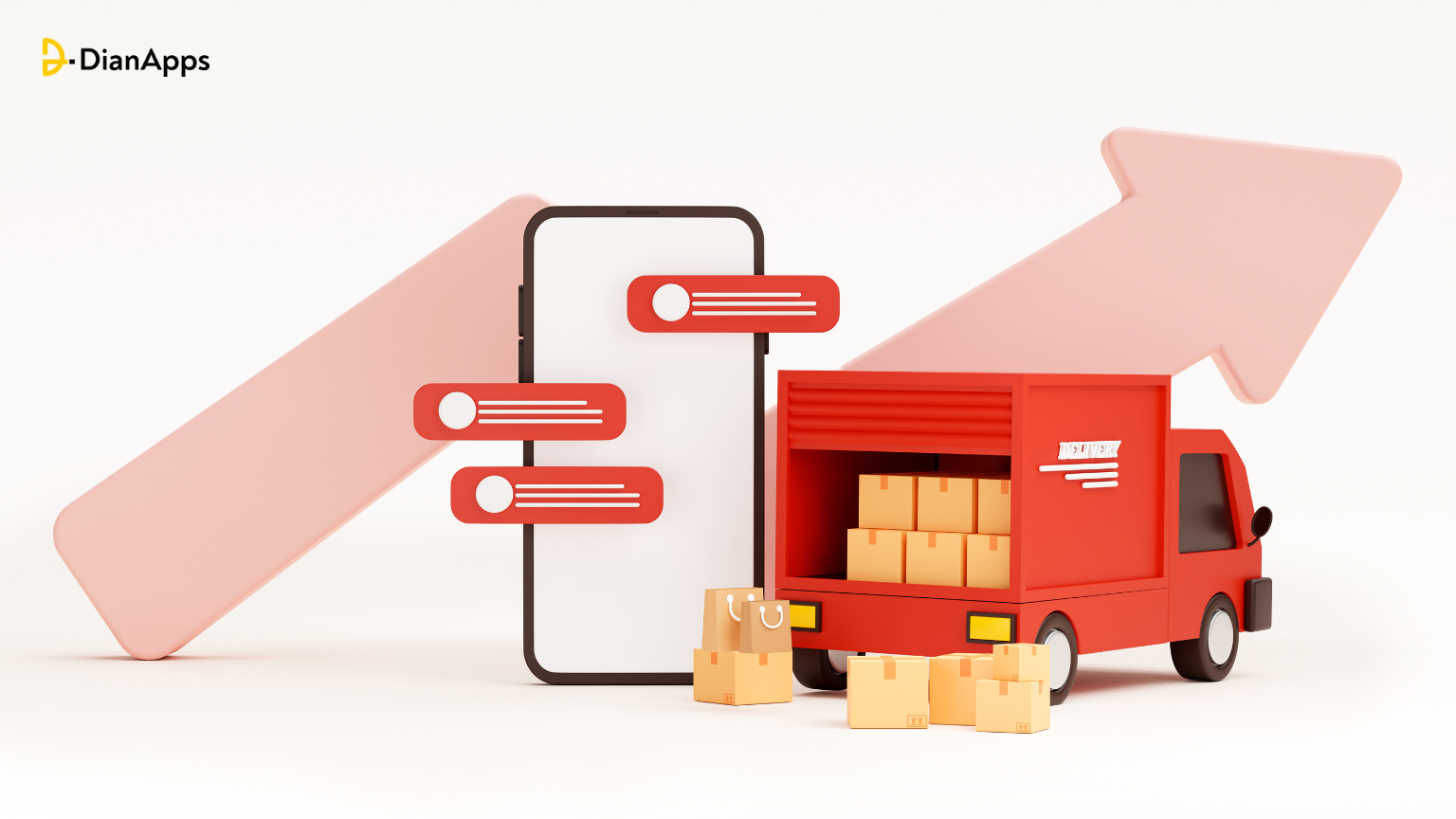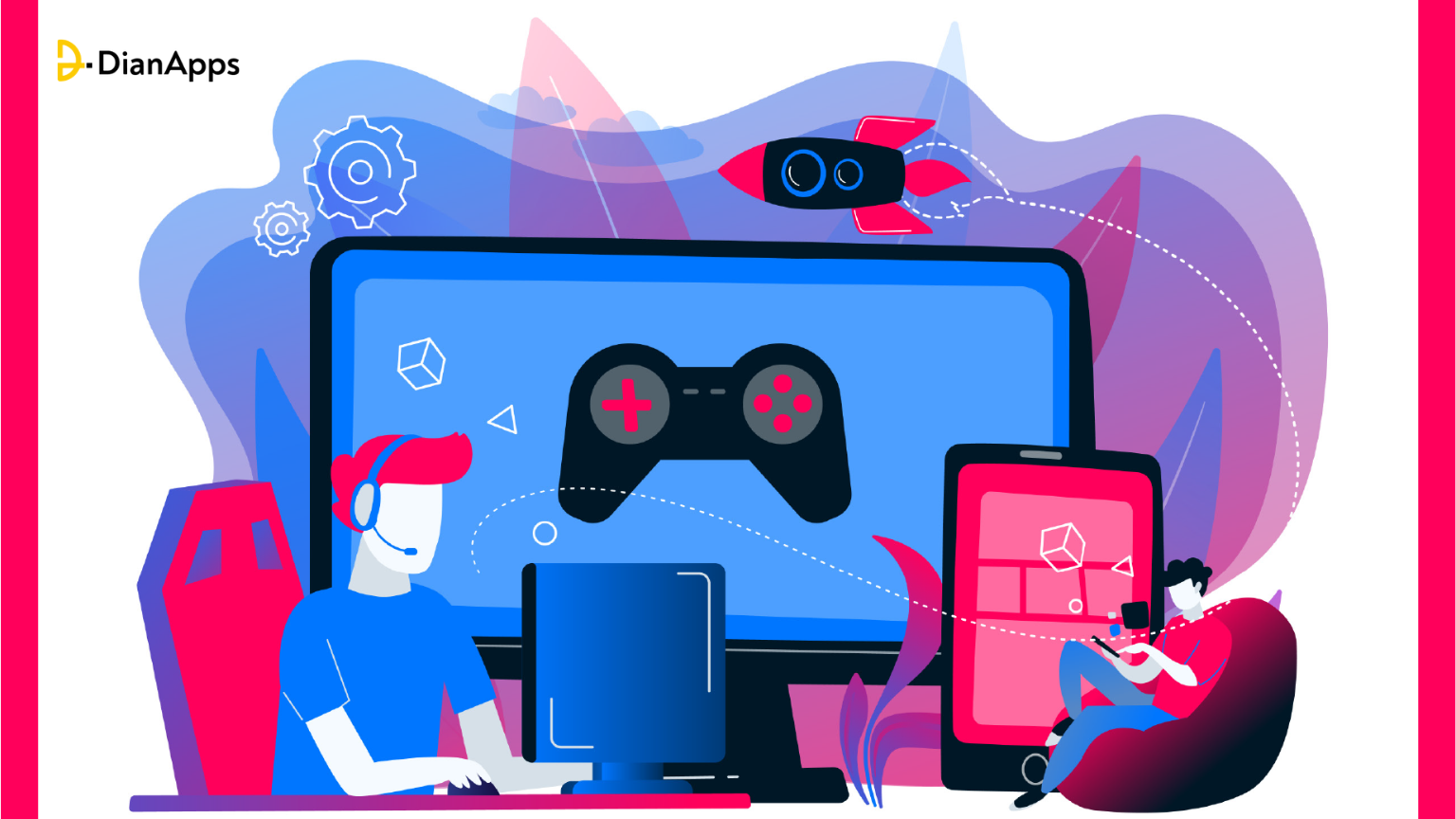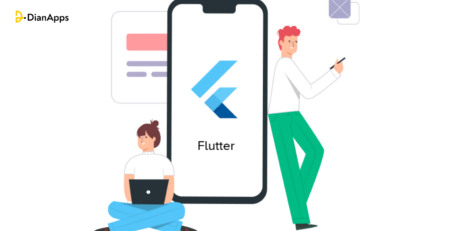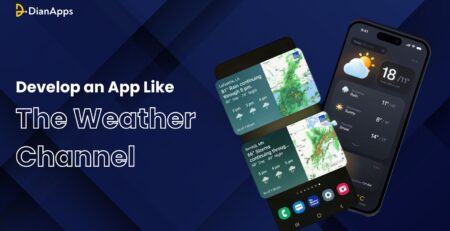How to grow transportation business with Logistics App Development?
Logistics app development is a rapidly evolving niche that has altered the way of transportation and logistics businesses operate. Logistics apps can be used to manage various aspects of transportation operations, such as route planning, scheduling, tracking, and delivery.
Furthermore, the app can also be used to communicate with customers, manage inventory, and analyze data to improve operations. These apps help to automate and streamline transportation operations, and to improve communication, efficiency, and customer service.
Let’s go through the latest Statistics on Logistics app development:
- The global logistics market is projected to reach $15.5 trillion by 2023, growing at a CAGR of 3.6% during 2018-2023.
- The transportation and logistics industry is also expected to generate $1.5 trillion in revenue from technology by 2023, driven by increased adoption of technologies such as IoT, robotics, and automation.
- This has led to an increase in demand for logistics apps, which are expected to play a key role in the industry’s future growth.
Logistics app development can be done for various platforms, such as the web, iOS, and Android app development, and they can be integrated with other systems such as GPS and IoT devices. The main goal of logistics app development is to make the transportation and logistics process as efficient and streamlined as possible. With the help of logistics app, businesses can save time and costs, improve customer service and increase overall performance.
In this guide, we will be covering all the aspects of creating an app for your transportation business.
Let’s begin with finding the benefits of a logistics app for your enterprise software development.
Top Benefits of Building a Logistics Mobile App
1. Increased Efficiency:
One of the main benefits of logistics app development is increased efficiency. Logistics apps can automate many of the manual processes that are typically involved in transportation operations. This can save time and reduce errors, making it easier for businesses to manage their transportation operations. Automated routing, scheduling, and tracking can help to optimize routes and delivery times, reducing costs and increasing the speed of delivery.
2. Cost-Effective
Another benefit of logistics app development is cost savings. By automating many of the manual processes that are typically involved in transportation operations, logistics apps can help businesses to reduce costs. This can include reducing the need for human labor, reducing fuel consumption, and reducing the amount of inventory that needs to be held.
3. Improves Customer Services
Logistics apps can also improve customer service. By providing customers with real-time tracking and visibility, logistics apps can help businesses to improve communication and keep customers informed about the status of their deliveries. This can lead to increased customer satisfaction and loyalty.
4. Better Decision-Making
Another benefit of logistics app development is better decision-making. Logistics apps can provide businesses with a wealth of data and analytics, which can be used to make better decisions about transportation operations. This can include analyzing data on routes, delivery times, fuel consumption, and more.
5. Enhances Sustainability
Finally, logistics app development can help to improve the environmental sustainability of transportation operations. By optimizing routes and reducing fuel consumption, logistics apps can help to reduce carbon emissions and other environmental impacts.
6. Improve Warehouse Management
Transport and logistics mobile app development isn’t just restricted to the delivery process. It also helps you in streamlining your supply chain process and warehouse management.
The TMS (transportation management system) can enhance the way you manage your vehicle and warehouse inventory and dispatch cargo. Moreover, with artificial intelligence-based technologies, you will be able to leverage already existing routes and warehouse space usage so that your loading and unloading vehicle doesn’t go half empty.
Let’s move on to the key features that are needed to get started with your logistic app development services.
Key Features of a Logistic Application
A logistics app is a software application that helps businesses and individuals manage the logistics of their operations. These apps are designed to streamline the process of tracking and managing shipments, inventory, and logistics trucking services. Some of the key features of a logistics app include:
1. Real-time tracking:
One of the most important features of a logistics app is the ability to track shipments in real-time. This feature allows businesses and individuals to know the exact location of their shipments at any given time, which can help them make more informed decisions about their logistics operations.
2. Inventory management:
Another key feature of a logistic app is the ability to manage inventory. This feature allows businesses and individuals to track the number of products they have in stock, as well as the number of products they have ordered. It can also help businesses and individuals identify when they need to reorder products, which can help them avoid stockouts.
3. Route optimization:
A logistic app can also help businesses and individuals optimize their routes. This feature allows businesses and individuals to find the most efficient routes for their shipments, which can help them reduce costs and improve delivery times.
4. Electronic signature:
Some logistic apps also include an electronic signature feature, which allows businesses and individuals to sign for deliveries electronically. This feature can save time and reduce the need for paper documentation.
5. Automated notifications:
A logistic app can also include automated notifications, which can help businesses and individuals stay informed about their shipments. For example, businesses and individuals can receive notifications when their shipments are on the way, when they have been delivered, and if there are any issues with the delivery.
6. Reports and analytics:
A logistic app can also include reports and analytics features, which can help businesses and individuals track their logistics operations. For example, businesses and individuals can use these features to track their delivery times, shipping costs, and other important metrics.
7. Multiple modes of transportation:
A logistic app also offers multiple modes of transportation like air, sea, and land, to ensure that businesses and individuals can make the best decision based on their needs and budget.
8. Integration with other apps:
A logistic app can also integrate with other apps, such as accounting software, which can help businesses and individuals streamline their operations.
9. Security measures:
A logistic app should also have robust security measures to ensure that the data of businesses and individuals are protected. This includes encryption of data, a secure server, and regular updates to the software to address any vulnerabilities.
10. Customer support:
Finally, a good logistic app should also have excellent customer support. This can include a help center, online tutorials, and a dedicated customer support team that can help businesses and individuals with any issues they may have with the app.
Tech Stack Needed to Make a Logistics App for Transportation Business
The tech stack needed to make a logistics app will vary depending on the specific requirements of the app, but some common technologies that are often used include:
1. Backend development:
A logistics app will require a robust backend infrastructure to handle the data and logic of the app. Common backend technologies used for this include Node.js, Python, and Ruby on Rails.
2. Database:
A logistics app will also require a database to store and manage the data. Common databases used for this include MySQL, MongoDB, and PostgreSQL.
3. Frontend development:
The front end of a logistics app will need to be user-friendly and responsive so that users can easily access the app on different devices. Common frontend technologies used for this include HTML, CSS, and JavaScript.
4. Geo-location:
A logistics app will require geo-location functionality to track the location of shipments and optimize routes. This can be achieved by using technologies such as Google Maps API, OpenStreetMap, and GeoJSON.
5. Push notifications:
A logistics app will also require push notifications to send updates to users about their shipments. This can be achieved by using technologies such as Firebase Cloud Messaging or OneSignal.
6. Cloud hosting:
A logistics app will also require cloud hosting to ensure that the app is highly available and scalable. Common cloud hosting providers include Amazon Web Services, Google Cloud Platform, and Microsoft Azure.
7. Authentication and Authorization:
To ensure secure access to the app, an authentication and authorization layer needs to be implemented. This can be achieved by using technologies such as OAuth, JWT, and OpenID Connect.
8. Document management:
The logistics app may also require document management features to handle invoices, contracts, and other important documents. This can be achieved by using technologies such as Google Drive, Dropbox, and Box.
9. Integration:
A logistics app will also need to integrate with other apps and systems, such as accounting software and transportation management systems. This can be achieved by using technologies such as RESTful APIs and webhooks.
10. Test automation:
To ensure that the app is functioning correctly, test automation should be implemented. This can be achieved by using technologies such as JUnit, Selenium, and Appium.
Steps to build a logistics app for your business
The development of a logistics app involves several steps that include planning, design, development, testing, and deployment. Below is a detailed description of each step:
1. Planning:
The first step in developing a logistics app is to plan the project. This includes identifying the goals and objectives of the app, determining the target audience, and defining the features and functionality that will be included in the app.
2. Design:
The next step is to design the user interface and user experience of the app. This includes creating wireframes and mockups of the app, as well as determining the navigation and layout of the app. It is important to ensure that the design is user-friendly and intuitive so that users can easily access the app on different devices.
3. Development:
Once the design is complete, the development of the app can begin. This includes coding the backend and front end of the app, as well as integrating the app with other systems and apps. It is important to use the right technologies and frameworks to ensure that the app is scalable and performant.
4. Testing:
After the app is developed, it needs to be thoroughly tested to ensure that it is functioning correctly. This includes testing the app on different devices, as well as testing the backend and frontend functionality. It is important to identify and fix any bugs or issues that are found during testing.
5. Deployment:
Once the app has been tested and any issues have been resolved, it can be deployed to the app stores or to a private server. It is important to ensure that the app is properly configured and optimized for deployment.
6. Maintenance and Support:
After the app is deployed, it needs to be maintained and supported. This includes updating the app to fix bugs and issues, as well as adding new features and functionality. It is important to provide excellent customer support to users so that they can get the most out of the app.
How much does it cost to build a logistics app?
A logistics software’s initial minimal viable product may be produced for between $150,000 and $200,000 in cost. The creation of a web-based application for managers and dispatchers as well as a mobile logistics app is part of this project. You would also need to consider the upkeep expenses for such software, which should be between $80,000 and $100,000 a year.
Wrapping Up!
As you can see, developing logistics software may dramatically increase the productivity of your company. Mobile applications may streamline the process and make it more automated and cost-effective.
You’ll probably need to use professional app developers to create a logistics mobile application. Therefore, attempt to choose a mobile app development company that has the required experience while searching for a possible partner.
Any remaining queries about the creation of a logistics app? Or do you need a precise estimation of potential expenses? Reach out to us, and we’ll assist you with developing, planning, and estimating your logistics software.




